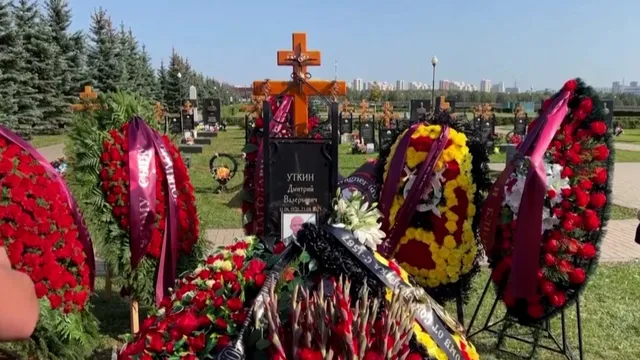
Russian attacks kill 20 and injure hundreds in Ukraine
2025-06-25 22:58- A Russian missile strike on Dnipro on June 24, 2025, resulted in at least 20 deaths and hundreds injured.
- The attack severely damaged schools, kindergartens, and medical facilities, highlighting the ongoing humanitarian crisis.
- This escalation reflects the broader strategy shifts in Russian military tactics against Ukraine amid NATO discussions on support.
Express your sentiment!
Insights
On June 24, 2025, Ukraine experienced a devastating Russian missile strike in the Dnipro region that resulted in 20 confirmed fatalities and approximately 300 injuries. The regional governor, Serhii Lysak, reported that the assault targeted not only residential areas but also civilian infrastructure, including educational institutions and medical facilities. This attack comes amid a series of intensified military operations by Russian forces throughout Ukraine, particularly focusing on frontline regions such as Dnipro, which is critical for military supply routes and local governance. Despite prior warnings from Ukrainian officials regarding the potential for escalated attacks, the scale of this assault indicates a marked increase in Russian aggression, possibly correlated with ongoing geopolitical dialogues among NATO members regarding the situation in Ukraine. As the conflict continues, the humanitarian implications are increasingly dire. With many civilians caught in the crossfire, the Ukrainian government is imploring allies at the NATO summit to ramp up support and put pressure on Russia to halt its military actions. The international community is recognizing the urgency of the situation; Ukrainian President Volodymyr Zelensky discussed securing additional aid from Western partners at the summit. The bombing of Dnipro and its surrounding areas further underscores the harsh realities faced by everyday citizens amidst the turmoil, as public fear escalates while the government strives to coordinate emergency responses for the affected populations. Additionally, reports suggest that the Russian military's tactics are evolving, potentially leveraging new technology and tactics to maximize damage to urban areas and create psychological stress among the civilian population. The adoption of motorcycles for frontline operations may indicate a shift in Russian military strategy, emphasizing mobility and rapid engagement. As military analysts assess the situation, there are concerns regarding the resilience of Ukrainian infrastructure and the overall capacity to respond to these types of coordinated attacks moving forward. As fighting intensifies across various fronts, both the Ukrainian military and its allies face significant challenges in keeping pace with the developments on the battlefield. Coupled with the political dingy, misinformation campaigns, and changing tactics, the situation remains fluid and uncertain. With the ongoing NATO discussions and Ukraine's pleas for stronger support, the global community watches closely, weighing its responses to the continuing conflict and potential long-term implications for European security.
Contexts
The ongoing conflict in Ukraine has drawn significant attention from the international community, particularly from NATO (North Atlantic Treaty Organization). Since the onset of hostilities, NATO support for Ukraine has evolved, fluctuating from political backing to the provision of military aid and training. This report aims to analyze the impact of NATO's support on Ukraine’s capacity to defend itself and the broader geopolitical implications of this involvement. NATO’s assistance has been instrumental in enhancing the Ukrainian military’s operational effectiveness, with the provision of advanced weaponry, intelligence sharing, and tactical training. Through joint exercises and capacity-building initiatives, NATO has helped transform Ukraine's military into a more formidable fighting force, capable of countering both conventional and hybrid threats. This transformation is evident in Ukraine's improved strategic planning, enhanced logistics, and increased interoperability with NATO forces, which have collectively bolstered its defense posture against aggression. Moreover, this support asserts NATO’s commitment to regional security, as it sends a clear message of deterrence against further escalations by Russia or any other hostile actors in Eastern Europe. The internal ramifications of NATO support cannot be understated. Increased military assistance has strengthened national unity among Ukrainians, as citizens rally behind their armed forces in a time of crisis. NATO's backing has also solidified the Ukrainian government's position domestically, providing a counter-narrative against disinformation propagated by adversaries. The accession path that Ukraine has pursued, fueled by NATO’s support, aligns with aspirations for closer ties with Western democracies, which has profound implications for Ukraine's political landscape. As NATO continues to support Ukraine, it also enhances cooperative security arrangements in the region, fostering a sense of collective defense among neighboring states. Consequently, NATO's involvement serves not only Ukraine's defense needs but also the broader goal of maintaining stability in Eastern Europe. However, the ongoing assistance from NATO is fraught with challenges and risks. First, the escalation of NATO's involvement could provoke a more aggressive response from Russia, which views NATO's presence on its borders as a direct threat to its influence and security. This precarious balance underscores the delicate nature of NATO's support; while it is essential for Ukrainian sovereignty, it necessitates careful strategic calculations to avoid inadvertent escalations that could widen the conflict. Furthermore, sustaining long-term support indicates a commitment that could stretch NATO resources, raising questions about the alliance’s unity and resolve in meeting multiple global obligations concurrently. It is imperative for NATO to navigate these challenges seamlessly, ensuring that any support provided to Ukraine is both sustainable and strategically calibrated. In conclusion, NATO's support for Ukraine has undeniably transformed the dynamics of the conflict, strengthening the Ukrainian military and enhancing national resilience and unity. The implications of this support extend beyond immediate military needs, shaping Ukraine's aspirations for integration with Western institutions and contributing to regional stability. However, this support must be carefully managed to mitigate risks of escalation with Russia and ensure a united front within NATO. The ongoing developments will continue to influence not only the trajectory of the conflict but also the broader geopolitical landscape in Europe.